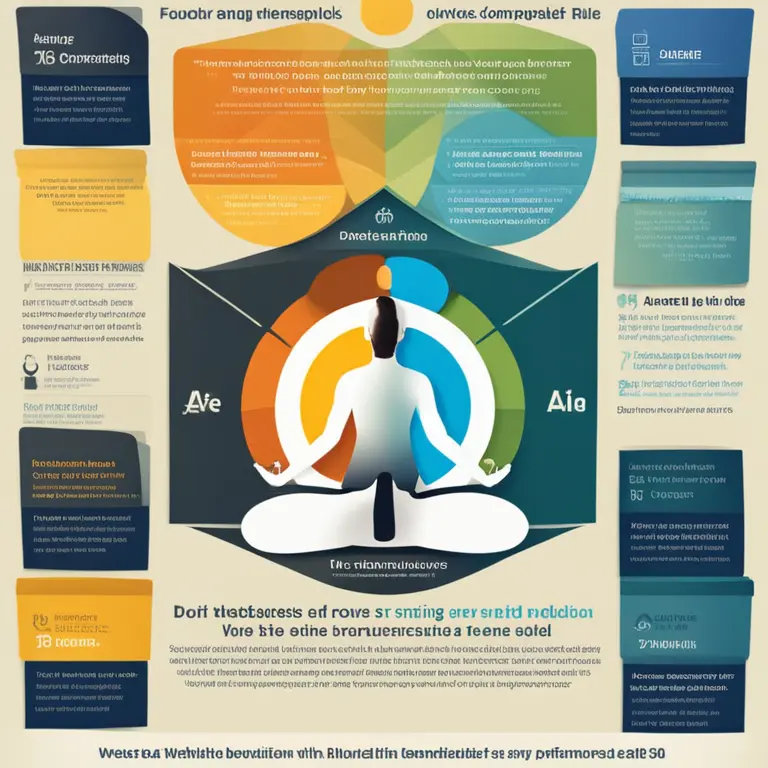
Meditation Techniques & ADHD
Discover effective meditation practices tailored for individuals with ADHD to promote focus, calmness, and emotional regulation.
article by Hina Kurosawa
Introduction to Meditation and ADHD
Meditation has been widely recognized as a beneficial practice for the mind and body, especially for those managing Attention-Deficit/Hyperactivity Disorder (ADHD). This condition, characterized by symptoms of inattention, hyperactivity, and impulsivity, can often make it challenging for individuals to maintain focus and equilibrium in their daily routines. However, meditation can offer a non-pharmacological approach to enhance concentration, reduce stress, and improve overall well-being. As we continue through the decade, the applicability of meditation as a supportive technique for ADHD has gained considerable attention from the mental health community.

Selecting the Right Meditation Style
When incorporating meditation into an ADHD management strategy, it's important to find a style that aligns with individual preferences and needs. While some might benefit from structured practices like guided meditations, others might find solace in the simplicity of breath awareness or body scans. It is often recommended to start with brief sessions, gradually increasing the duration as comfort with the practice grows. Tailoring the meditation experience in this way can help maintain engagement and ensure consistency, which is essential for reaping the benefits over time.

Guided Meditation for Structured Focusing
Guided meditation is particularly conducive for individuals with ADHD, as it can provide the necessary structure to help maintain focus. By following the voice of an instructor, participants are led through a series of visualizations or prompts that can anchor their attention and minimize distractions. In recent years, advancements in audio streaming and mobile applications have made guided meditations more accessible, allowing individuals to integrate them easily into their daily routines, regardless of their location or schedule.

Mindfulness Meditation for Awareness Training
Mindfulness meditation is a practice that encourages participants to observe their thoughts and feelings without judgment. By training attention in this manner, those with ADHD can learn to redirect their focus back to the present moment when their mind begins to wander—a common occurrence for those with the condition. Moreover, mindfulness helps foster self-awareness, potentially leading to better recognition and management of ADHD symptoms over time. Empirical studies conducted in the past few years underscore the potential of mindfulness in enhancing executive function and emotional regulation among those with ADHD.
Yoga and Movement-Based Meditation
For some, particularly those who experience hyperactivity, sitting still for a traditional meditation session may be challenging. In such cases, movement-based meditation practices like yoga can provide an alternative. Yoga combines physical postures, breathing techniques, and meditation or relaxation, making it an all-encompassing practice. Engaging in yoga can help reduce restlessness and improve focus by channeling excess energy through movement while still incorporating mindful awareness. It has gained a growing following among the ADHD community for its holistic approach to managing the complexities of the disorder.
Incorporating Technology in Meditation Practice
With the ongoing advancements in technology, there are new tools and platforms that cater specifically to meditation for ADHD management. Wearables that track physiological responses such as heart rate and breathing patterns can guide individuals in achieving deeper relaxation and focus during their meditation sessions. Furthermore, emerging virtual reality (VR) applications are creating immersive meditation experiences that can significantly aid in reducing external distractions, providing a unique advantage for those finding traditional methods less effective.
Creating a Conducive Environment for Meditation
To make the most of meditation practices, setting up a conducive environment is crucial. This can mean finding a quiet space, using dim lighting or candles, and perhaps incorporating calming scents or sounds to help reduce sensory overload, which can be particularly beneficial for individuals with ADHD. By personalizing the meditation space, one can create an inviting atmosphere that encourages them to practice regularly and with greater enjoyment.
Consistency and Patience in Practice
It’s essential to approach meditation with consistency and patience, especially when managing ADHD. The benefits of meditation are often cumulative, with the greatest impacts being noted over prolonged periods. Individuals should set realistic expectations and be kind to themselves as they navigate the initial challenges of establishing a meditation routine. Over time, with sustained effort, many find their capacity to concentrate improves and their ADHD symptoms become more manageable, paving the way for a more balanced and centered life.
Published: 1/18/2024
Modified: 1/18/2024
More predictions
Come back here soon to learn more about yourself and your future


The Science View: Meditation & Brain Health
Delve into the science of how regular meditation practices can influence and improve brain function and overall mental health.


Meditation Techniques for Better Sleep Explored
Discover effective meditation methods to improve your sleep quality and embrace a more restful night with our guide.